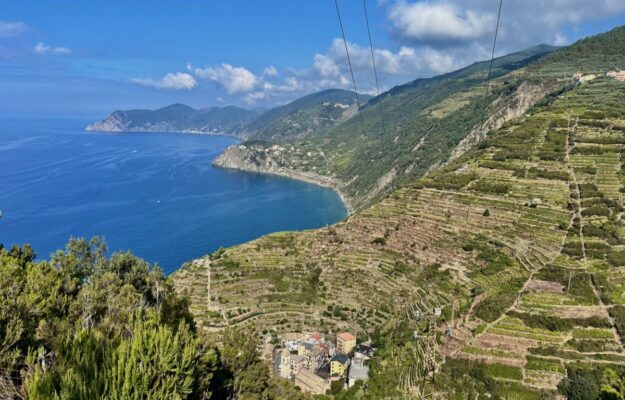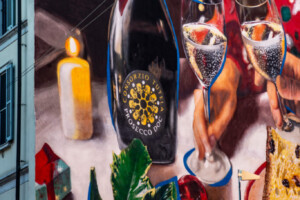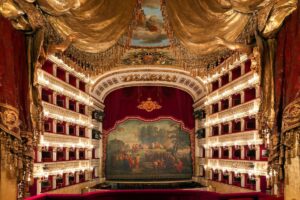The craggy stretch of coast of the Ligurian Riviera di Levante, in the territory of La Spezia, between Punta Mesco and Punta di Montenero, where, from North to South, there are five “lands”, as were referred to in ancient times the Municipalities of Monterosso al Mare: Vernazza, Corniglia, Manarola and Riomaggiore, the Cinque Terre are not just fishing villages with colourful houses, as they are mistakenly perceived by most, but the economic subsistence of this “jewel” of Italy. A UNESCO World Heritage Site, has always relied on land cultivation, from the vine, partly from the olive tree, and from terraces, man’s solution to making steeply sloping territories usable thanks to one of Italy’s most extreme examples of heroic viticulture and agriculture. And it is precisely from the vine, that a thousand-year-old settlement extended until the beginning of the twentieth century over a vine-growing area of over 1,000 hectares, progressively reduced to 100 hectares of vineyards today (source: Cinque Terre National Park), and on the 30th of September will start the working table debate “My first 50 years. Proposals to enhance the agriculture of the Cinque Terre”, promoted by the Municipality of Riomaggiore with the Tuttifrutti Association, which deals with the promotion of the Cinque Terre DOC and which, established in 1973, now celebrates its 50 years by designing and planning the future of a territory known today more for tourism than for agriculture.
The Cinque Terre denomination aims to recover the past in order to look to the future, bringing agriculture back to the centre of a shared strategy of sustainable development. The objective, which will be discussed at the working table - achieved thanks to funds from the Rural Development Plan and the Liguria Region - is the creation of an investment plan aimed at restoring infrastructure, such as monorail tracks, improving water services, modernizing the dry-stone walls, overcome the age-old problem of replanting rights and give concrete support to agricultural companies.
“Maintaining agriculture is the only way to protect the Cinque Terre’s culture and the overall economy – explains the mayor of Riomaggiore Fabrizia Pecunia- and it is also the best solution to the problem of hydrogeological instability. An objective that cannot be carried out solely by farmers. Institutional intervention is required - Europe, the Government, the Region - to support local administrations in order to implement an agricultural incentive plan, medium and long-term planning, and regulatory interventions capable of overcoming the obstacles that have rendered the forms of intervention adopted ineffective to date”.
Man’s role is critical in this territory, which is a National Park and a UNESCO World Heritage Site. To avoid losing its identity, it is necessary to ensure that the inhabitants continue to live here, supported in the difficult task of maintaining a constant balance with a complex nature in a difficult territory that is nevertheless the cradle of excellent products and millenary traditions. “Starting with the assumption that agriculture is the most important factor in preserving the Cinque Terre’s heritage and identity - concludes the mayor - we believe it is a priority to move forward with the development of a project, also financed by tourism resources, that aims to design a new way of doing agriculture, with the participation of our guests who participate in the debate with us (from the Tuttifrutti Association to the Region, passing through Government representatives), to embark on this important and unavoidable path together”.
Copyright © 2000/2025
Contatti: info@winenews.it
Seguici anche su Twitter: @WineNewsIt
Seguici anche su Facebook: @winenewsit
Questo articolo è tratto dall'archivio di WineNews - Tutti i diritti riservati - Copyright © 2000/2025









































































































































































































